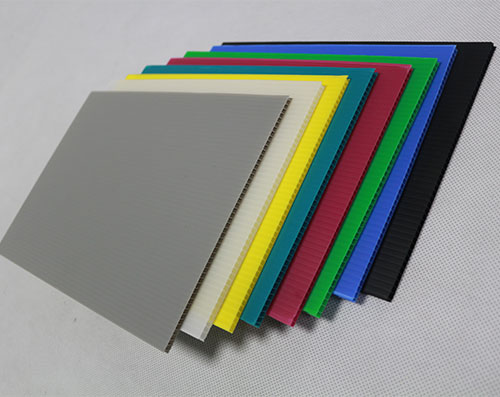
When it comes to versatile, durable, and cost-effective materials for packaging, signage, and construction, corrugated PP sheets have emerged as a popular choice across industries worldwide. These sheets combine the strength of corrugated structures with the excellent properties of polypropylene plastic, offering a solution that outperforms traditional materials like cardboard or wood.
In this comprehensive guide, we will explore everything you need to know about corrugated PP sheets — from their composition and types to their various applications, advantages, buying tips, and maintenance. Whether you’re a manufacturer, supplier, or end-user, this article will help you understand why corrugated PP sheets are rapidly gaining traction and how to choose the right product for your needs.
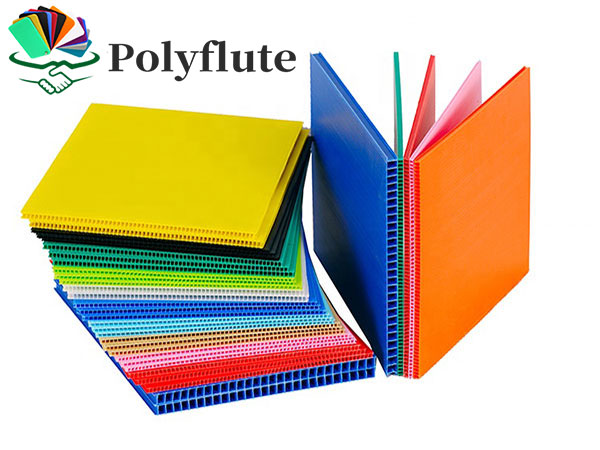
Corrugated PP sheets are plastic sheets made from polypropylene (PP) that feature a fluted, corrugated inner layer sandwiched between two flat outer layers. This design mimics the familiar structure of corrugated cardboard but is made entirely from polypropylene, a durable and chemical-resistant thermoplastic polymer.
This corrugated construction provides excellent rigidity and strength while keeping the sheet lightweight and flexible. The polypropylene material itself adds resistance to moisture, chemicals, UV exposure, and impacts — characteristics that traditional cardboard cannot match.
Sometimes referred to as polypropylene corrugated board or pp corrugated board, these sheets are commonly used where lightweight yet sturdy materials are needed. They also go by the name polypropylene corrugated plastic, emphasizing their plastic nature compared to paper-based products.
The versatility of corrugated PP sheets is reflected in the variety of types and specifications available on the market. Here are some of the common variations you will encounter:
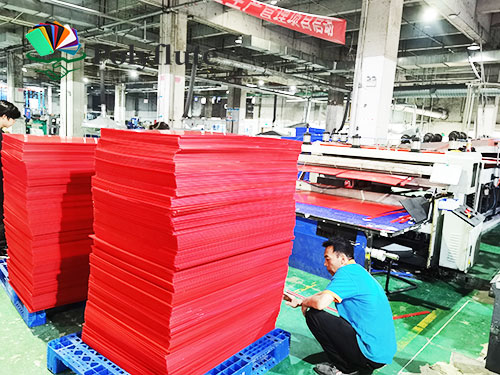
These sheets have one layer of fluting between two flat sheets, offering a good balance between strength and flexibility. They are ideal for packaging boxes, signage, and lightweight protective applications.
Double-wall sheets feature two fluted layers, providing higher durability and resistance to bending. These are suitable for more demanding packaging needs, construction temporary barriers, and reusable crates.
For maximum strength, triple-wall sheets use three layers of corrugation, making them comparable in sturdiness to plywood in some applications. These are often employed in industrial packaging, structural panels, and protective surfaces in heavy-duty environments.
Corrugated PP sheets come in a wide range of thicknesses and flute sizes, which directly affect their mechanical properties, durability, and suitability for various applications. Typically, thickness ranges from 2mm for lightweight, flexible sheets up to 12mm or more for heavy-duty structural panels.
The thickness is influenced by the number of corrugated walls (single, double, triple) and the flute size — that is, the height and spacing of the corrugated ribs inside the sheet. The flute acts as a shock absorber and weight distributor, so larger flutes generally provide better cushioning and strength but result in a rougher surface. Smaller flutes produce a finer surface finish, which is beneficial when high-quality printing or smooth texture is required.
| Number of Walls | Typical Thickness Range | Flute Height Range (mm) | Typical Applications |
|---|---|---|---|
| Single-Wall | 2mm – 5mm | 3mm – 5mm | Lightweight packaging, signage, protective covers |
| Double-Wall | 5mm – 8mm | 5mm – 7mm | Heavy packaging, crates, construction barriers |
| Triple-Wall | 8mm – 12+ mm | 7mm – 10mm | Industrial pallets, structural panels |
The choice of flute size and sheet thickness depends heavily on the load-bearing and protective requirements. For example, a shipping container for delicate electronics might use a single-wall sheet with smaller flute sizes for a smooth printed surface and moderate cushioning. In contrast, a reusable industrial crate will benefit from double or triple-wall sheets with larger flutes that can withstand heavy impacts.
Another key factor is flexibility. Thinner sheets with smaller flutes bend more easily and are ideal for wrapping or curved applications, while thicker sheets maintain shape under stress but are less flexible.
Proper selection of thickness and flute size balances cost-efficiency with performance. Thicker sheets cost more but offer enhanced durability and longer life cycles, especially in harsh environments.
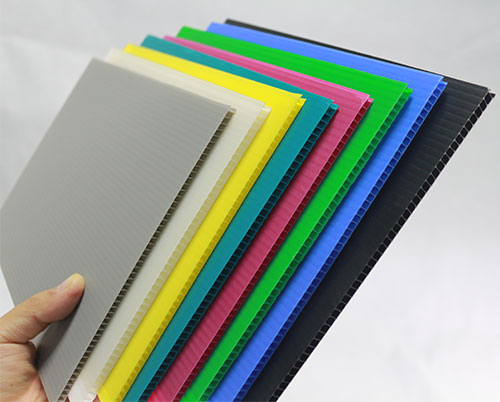
The versatility of corrugated PP sheets is further enhanced by a variety of surface treatments and color options tailored to specific industry needs and aesthetics. These treatments improve the sheet’s performance, usability, and appearance for different environments.
| Treatment Type | Description | Benefits | Typical Use Cases |
|---|---|---|---|
| UV Stabilization | Additives incorporated to resist degradation from sunlight | Prolonged outdoor lifespan; color retention | Outdoor signage, agricultural panels |
| Anti-Slip Texture | Embossed or roughened surface | Increased grip and safety | Flooring protection, walkways |
| Printable Coating | Special coatings to enhance ink adhesion | High-quality, durable printing | Advertising boards, retail displays |
| Anti-Static Treatment | Surface modified to reduce static electricity | Prevent dust attraction and static shocks | Electronics packaging, cleanroom use |
UV stabilization is critical for sheets used outdoors or exposed to direct sunlight for long periods. Without it, polypropylene can become brittle and discolored. UV additives absorb or reflect harmful rays, extending the sheet’s useful life by several years.
Anti-slip textures are embossed surfaces that improve traction on floors or ramps, ensuring safety without compromising the sheet’s resistance to moisture or chemicals.
When it comes to printing, many manufacturers apply printable coatings to the outer layer, allowing high-definition graphics using various printing technologies such as UV, solvent, or latex inks. This makes corrugated PP sheets ideal for vibrant signage and promotional materials.
Manufacturers typically offer standard colors such as white, black, blue, and translucent. However, custom color matching is widely available for branding purposes or to meet specific visual design needs. Translucent or semi-transparent sheets allow light transmission, useful in applications like greenhouse panels or light diffusers.
| Color Type | Characteristics | Applications |
|---|---|---|
| Opaque Colors | Solid, non-transparent | Packaging, advertising, protective panels |
| Translucent | Semi-transparent; diffuses light | Agricultural panels, light fixtures |
| Custom Colors | Made to order based on Pantone or sample | Brand-specific signage, decorative uses |
These surface options and colors add tremendous value by enabling corrugated PP sheets to meet specific functional and marketing requirements, making them highly adaptable across different sectors.

The price of corrugated PP sheets varies widely depending on several key factors including thickness, number of walls, surface treatments, and order quantity. Understanding these pricing components can help buyers make informed decisions that balance cost and performance.
| Product Type | Thickness Range | Price Range (USD per sqm) | Key Price Factors |
|---|---|---|---|
| Single-Wall Sheets | 2mm – 5mm | $2.5 – $5.0 | Thickness, size, surface finish, volume discounts |
| Double-Wall Sheets | 5mm – 8mm | $5.0 – $8.5 | Number of layers, UV treatment, custom colors |
| Triple-Wall Sheets | 8mm – 12mm+ | $8.5 – $15.0 | Structural complexity, reinforced coatings, shipping costs |
Thicker sheets and those with multiple corrugated layers naturally cost more due to the increased amount of polypropylene material and the complexity of manufacturing. Additional surface treatments such as UV stabilization, anti-slip textures, or printable coatings can also add to the cost, but significantly improve the sheet’s durability and usability.
Order quantity is another important factor: bulk orders typically receive better pricing due to economies of scale. Shipping costs may also vary, especially for heavier double- or triple-wall sheets, which can affect the final purchase price.
Ultimately, buyers should consider both their application requirements and budget constraints to choose the most cost-effective corrugated PP sheet option.
There are many reasons why corrugated PP sheets have become the material of choice in numerous sectors:
The corrugated structure enhances rigidity without significantly increasing weight. This makes the sheets easy to handle and transport, reducing shipping costs.
Unlike cardboard, polypropylene corrugated plastic does not absorb water or degrade when exposed to chemicals like oils, acids, or solvents. This property ensures long-lasting performance even in harsh environments.
These sheets are designed for multiple uses and are 100% recyclable. Choosing pp corrugated board helps reduce waste compared to disposable packaging solutions.
The flat surface of corrugated PP sheets allows for high-quality printing with UV, solvent, or latex inks. This is especially valuable in signage, displays, and branded packaging.
From packaging to construction, automotive, agriculture, and retail, corrugated PP sheets are adaptable to a wide range of uses, replacing heavier or less durable materials.
When considering durability, reusability, and protection, these sheets offer great value for money, often outperforming other materials in the total cost of ownership.
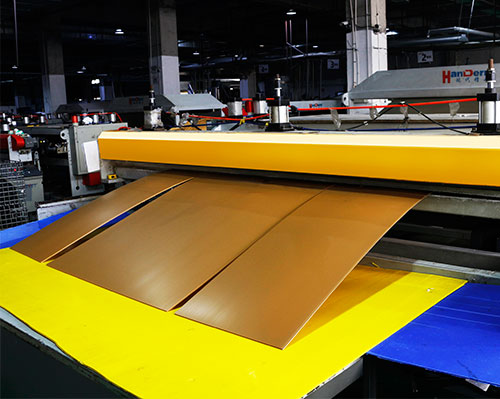
The diverse benefits of corrugated PP sheets enable their use across many fields:
One of the most popular uses for pp corrugated board is in protective packaging and shipping containers. These sheets provide cushioning and structural support for fragile items and electronics, and their resistance to moisture means goods stay safe even in humid conditions.
Thanks to their printable surface and weather resistance, polypropylene corrugated board sheets are widely used for outdoor advertising boards, event displays, exhibition panels, and promotional signage.
Builders use corrugated PP sheets for floor and wall protection during renovations, as well as for lightweight partitions. Their ability to resist impact and moisture makes them ideal for temporary coverings on construction sites.
In agriculture, these sheets serve as greenhouse panels, crop dividers, and plant guards. Their chemical resistance and durability help extend their service life in outdoor farming environments.
Manufacturers use corrugated PP sheets as liners, protective covers, and organizers in factories and automotive workshops. Their strength and chemical resistance make them suitable for rugged industrial use.
Selecting the perfect corrugated PP sheets for your project requires considering several factors:
Assess your strength and protection needs. For light-duty applications, single-wall sheets may suffice, while heavy-duty projects may require double or triple-wall options.
If the sheets will be used outdoors or exposed to sunlight, UV stabilization is crucial to prevent brittleness and fading.
For printing or aesthetic purposes, opt for sheets with smooth surfaces. For anti-slip or grip needs, textured finishes are available.
Consider the sheet dimensions and whether custom sizes or colors are needed for your application or branding.
Choose reputable manufacturers who provide detailed product data, samples, and comply with environmental and quality standards.
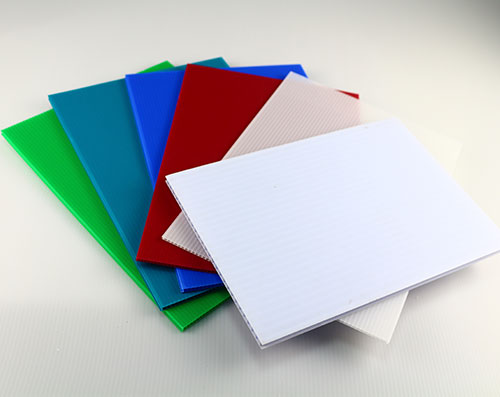
Proper maintenance can extend the life of your corrugated PP sheets:
Clean regularly with mild soap and water; avoid abrasive cleaners or solvents that may damage the surface.
Store sheets flat in a cool, shaded place to prevent warping or UV damage.
Handle with care to avoid crushing or bending that could compromise the corrugated structure.
For outdoor use, inspect periodically for any signs of wear or damage, and replace sheets as needed.
The market for corrugated PP sheets is evolving, with manufacturers focusing on sustainability, enhanced performance, and specialized uses. Recent innovations include:
These advancements ensure that corrugated PP sheets remain competitive and relevant in a fast-changing industrial landscape.
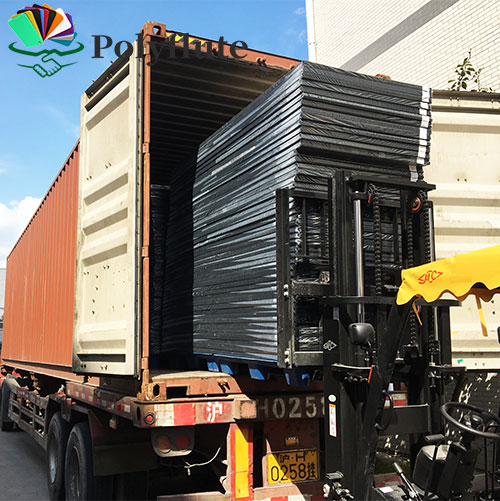
In summary, corrugated PP sheets represent a durable, lightweight, and versatile material solution with broad industrial and commercial uses. Their superior resistance to water, chemicals, and physical impact — combined with recyclability and customization options — make them an excellent choice over traditional materials like cardboard or wood.
Whether you need packaging materials, signage boards, construction protection, or agricultural panels, understanding the types, benefits, and selection criteria of corrugated PP sheets will help you optimize your choice for quality and cost-effectiveness.
If you want to explore or source high-quality corrugated PP sheets or polypropylene corrugated boards, make sure to contact reliable manufacturers who can provide detailed specifications, samples, and customization services. (Polyflute, as a manufacturer with 20 years of experience, looks forward to cooperating with you!)
